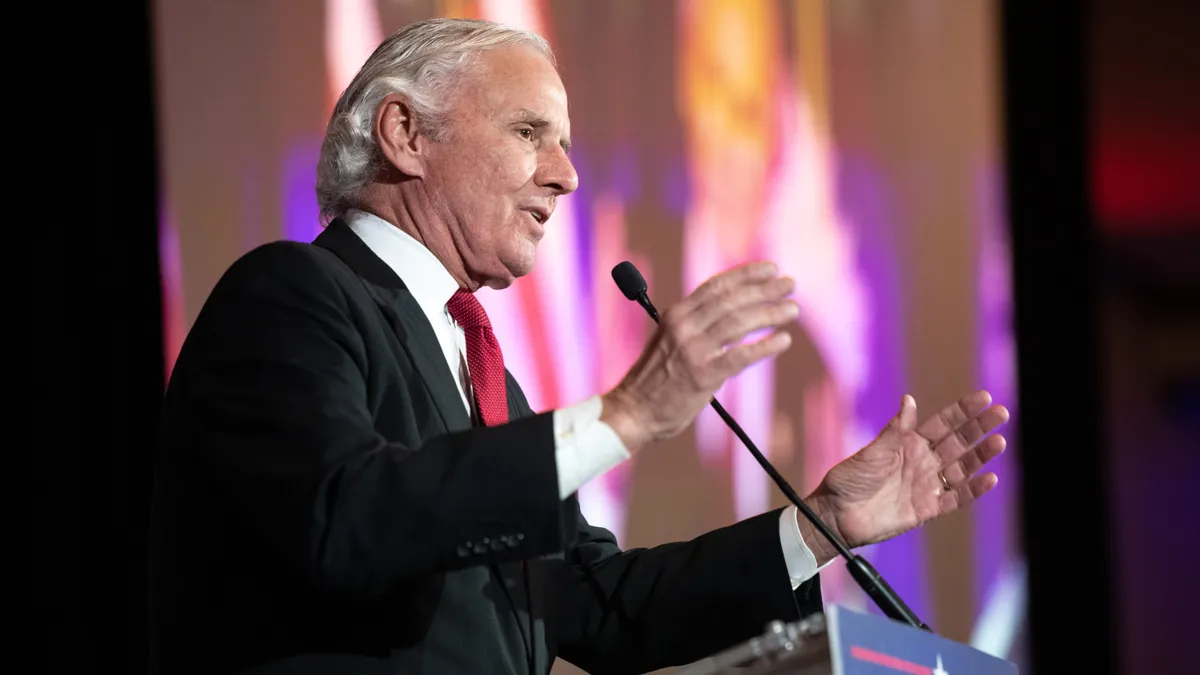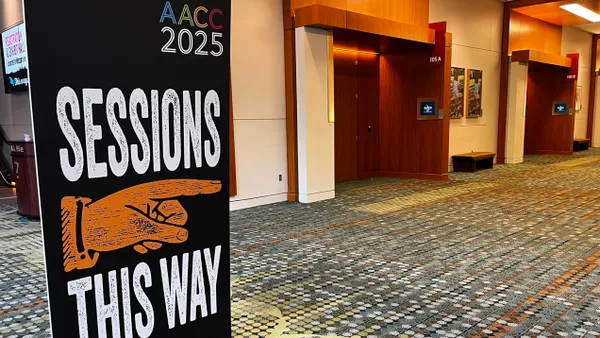Dive Brief:
- South Carolina Gov. Henry McMaster designated $17 million in federal coronavirus relief money to fund a new program that will provide tuition-free technical college to about 15,000 students in high-demand fields in the state.
- Students must be studying for an associate degree or credential in industries such as manufacturing, healthcare, computer science and information technology, or construction.
- McMaster, a Republican, urged the state's legislature to set aside $124 million more from another pool of federal coronavirus relief funding to keep the scholarship going through the end of June 2024.
Dive Insight:
The investment by McMaster matches heightened interest among institutions, states and the federal government in developing tuition-free college programs, often for two-year schools.
Such initiatives are particularly important as undergraduate enrollment continues to plummet, with sharp declines in the number of students attending community colleges. Enrollment in two-year colleges fell by about 14% from fall 2019 to fall 2021, according to preliminary data from the National Student Clearinghouse Research Center.
President Joe Biden pitched free community college through a state-federal partnership in the original iteration of his sweeping social spending plan, but the proposal was taken out as the White House scaled back the price tag of the legislation. The move earned condemnation from dozens of education and civil rights organizations.
Meanwhile, McMaster's initiative aims to address a labor shortage in South Carolina.
"This funding will take on the crisis head-on by providing thousands of South Carolinians with the skills needed to thrive in a number of high-demand careers," McMaster said in a statement.
Any recent South Carolina high school graduate or adult is eligible for the newest program and can attend any of the state's technical colleges. The scholarship will cover tuition and fees.
A spokesperson for the governor did not immediately respond to an emailed question Monday about whether the program is first- or last-dollar. In first-dollar programs, financial aid is offered to students before accounting for other assistance, making it more likely they can use other scholarships or grants for nontuition expenses. In last-dollar programs, students are awarded aid after other money like scholarships and federal Pell Grants are taken into account.
Recipients must maintain a 2.0 GPA and either take a financial literacy course at a technical college, be employed, or volunteer for 100 hours at a nonprofit or service organization.
The program begins January 2022.
Similarly, Michigan's governor last year earmarked $24 million in federal coronavirus relief dollars to pay for tuition-free college for workers who were on the front lines during the early months of the pandemic. The program was part of a greater goal of having 60% of the state's working adults earn a credential or postsecondary degree by 2030.
It was enormously popular: Michigan officials estimated they would receive 15,000 applicants, but as of mid-April this year, the program drew 120,000.
McMaster's program builds on one he established during the pandemic. He devoted $12 million in federal aid to pay for short-term credentials in high-need workforce areas.
Virginia this year also funded a tuition-free community college program for students from low- and middle-income backgrounds studying in high-demand fields. But it did not rely on federal relief money.
Pine County in Minnesota used federal coronavirus aid to beef up scholarships. As a result, its local two-year school, Pine Technical and Community College, guaranteed two free years of tuition for high school graduates in that area.














